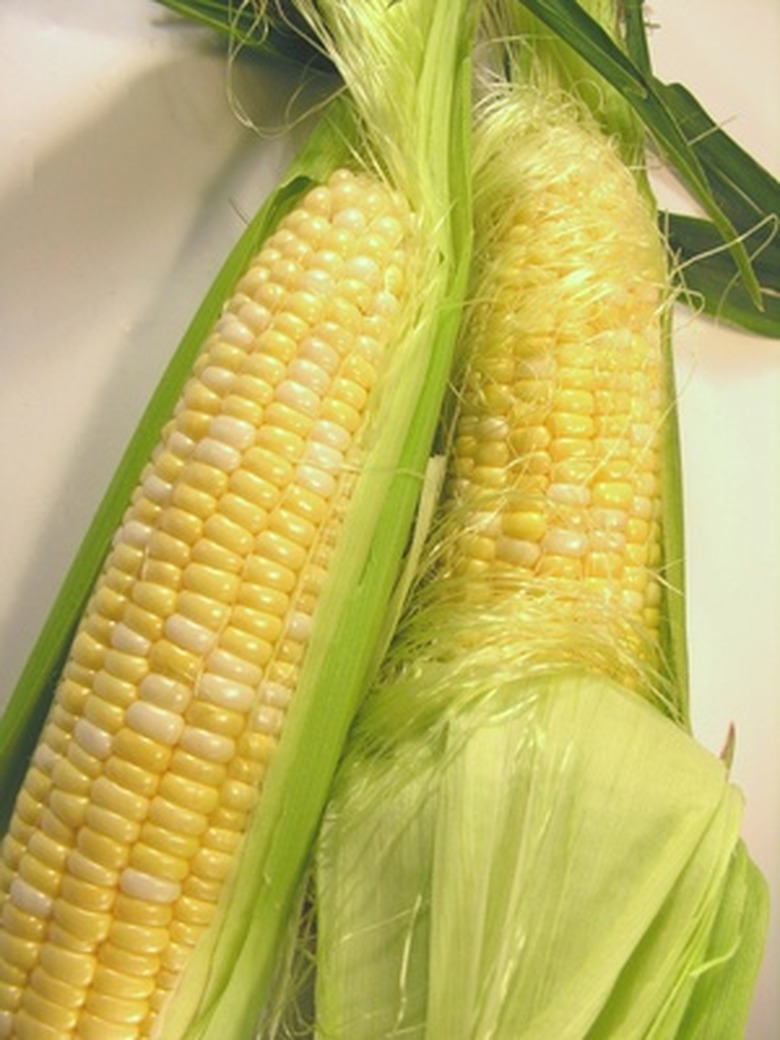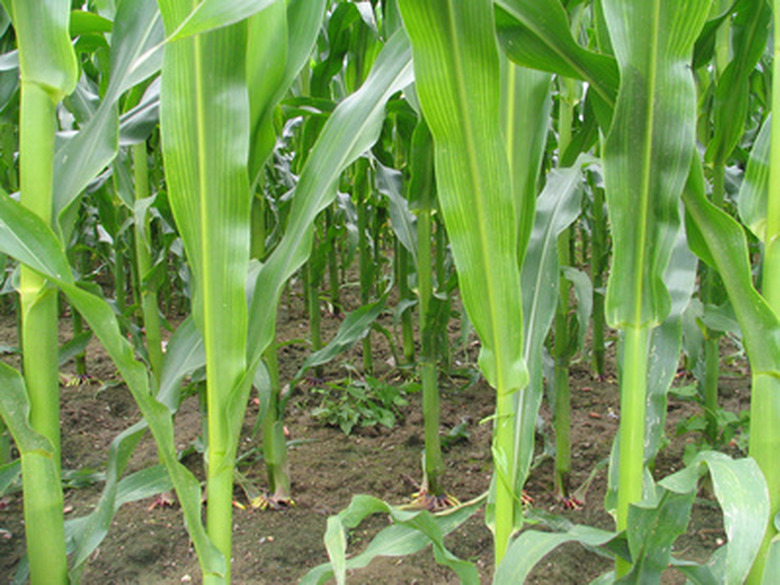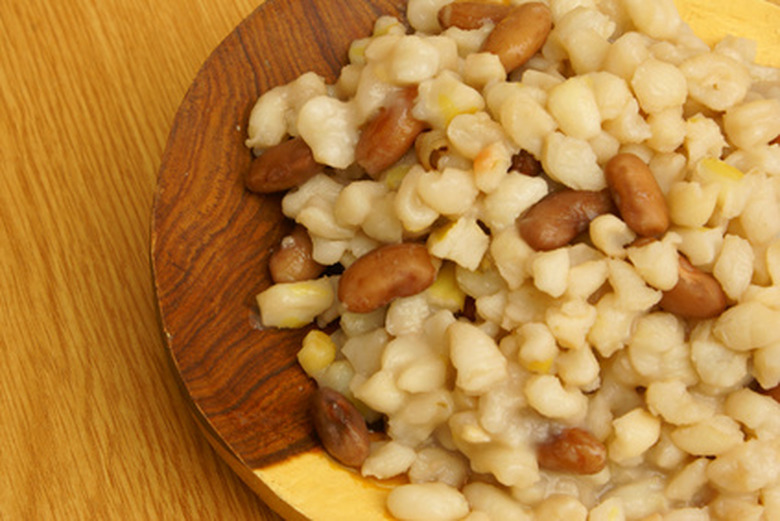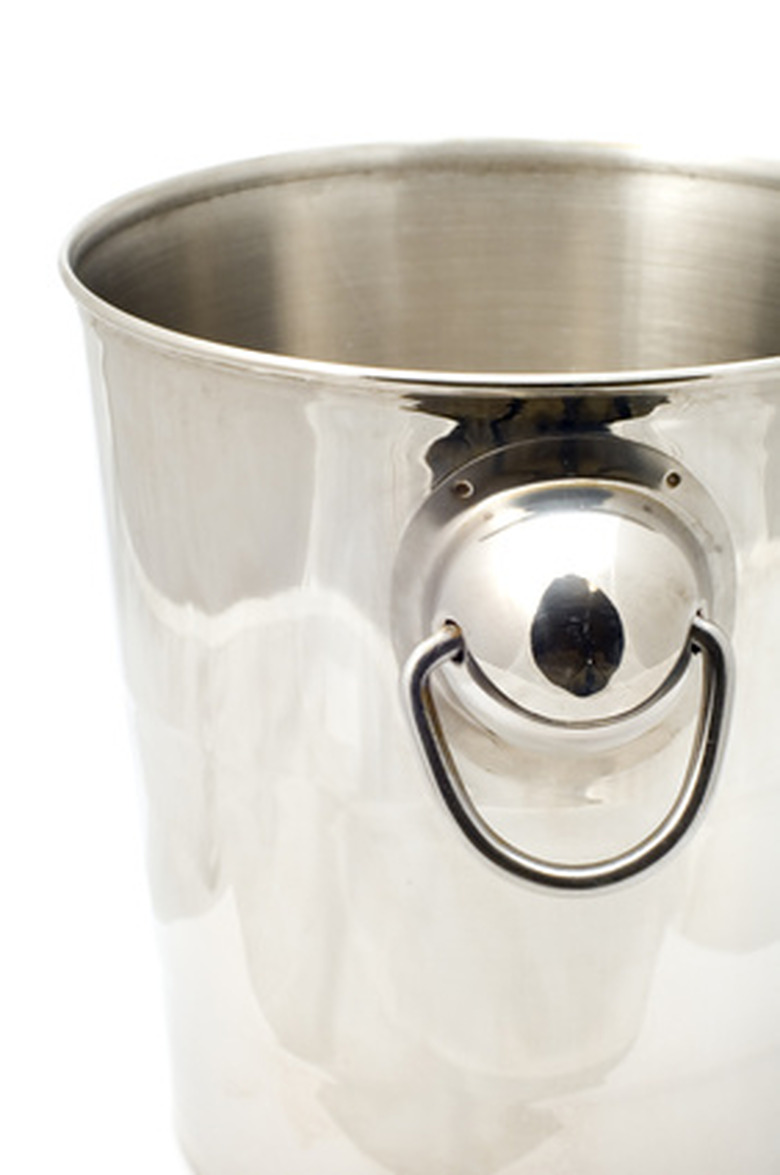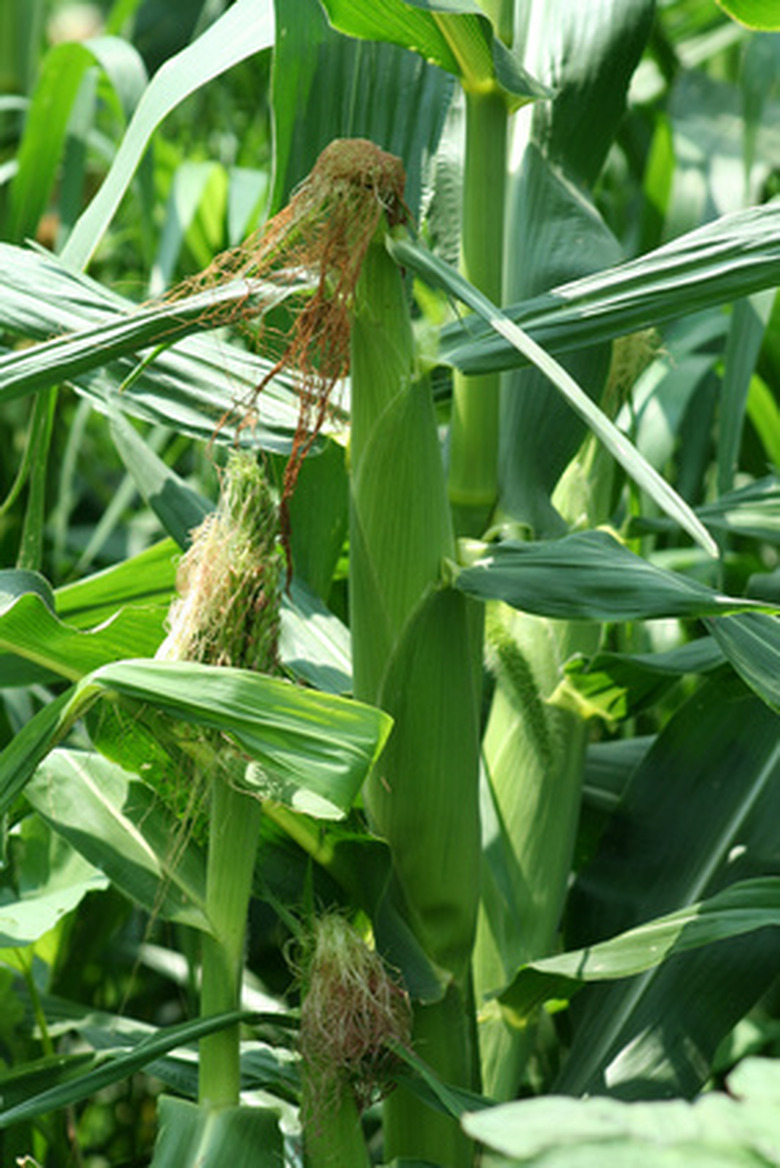How To Fertilize Sweet Corn With Nitrogen
Sweet corn is difficult to grow with a good yield in an average backyard garden because it is a heavy feeder of nitrogen. Even though nitrogen comprises about 80 percent of the Earth's atmosphere, it leaks out of soil easily, and keeping enough of it available to sweet corn roots in soil poses challenges for the organic gardener who doesn't want to use petroleum-based fertilizers. Periodic infusions of nutrient-rich solutions into the root base, coupled with natural nitrogen-fixing companion plants will prevent nitrogen deficits and the consequential lower harvest.
Step 1
Plant sweet corn in rich soil that remains at least 55 degrees Fahrenheit, 1 to 2 inches deep. If direct-seeding, plant about 8 inches apart. Water well to initiate germination.
Step 2
When the corn plants are about a foot high and sturdy, plant a couple of pole beans near the base of each stalk. The nitrogen fixed by the beans will help feed the sweet corn, even as the maize provides a natural trellis for the beans.
- Sweet corn is difficult to grow with a good yield in an average backyard garden because it is a heavy feeder of nitrogen.
Step 3
Submerge about a dry quart of half-composted organic material in a 5-gallon bucket of water and allow to steep for at least 24 hours.
Step 4
Strain out the solids and dilute the liquid with more water until it is the color of weak tea.
Step 5
Pour the compost tea at the bases of the sweet corn roots. Repeat every two weeks or more often if lower leaves turn yellow.
Tip
Sweet corn can best absorb nutrients in slightly acidic soils with a pH of 6.0 to 6.8. Composting organic material can be yard clippings, herbivore manure, spent garden plants, etc. After the bean plants have grown several inches and started climbing up the corn stalks, direct-seed a winter squash such as pumpkins between the plants. These three companion plants were known to native Americans as "The Three Sisters." The broad squash leaves discourage weeds and slow water evaporation from the soil. Don't plant more than two beans near any single corn plant, as too many climbing bean plants can pull a sweet corn stalk to the ground.
Things Needed
- Fertile soil
- Bucket
- Composting material
- Water
- Pole beans
